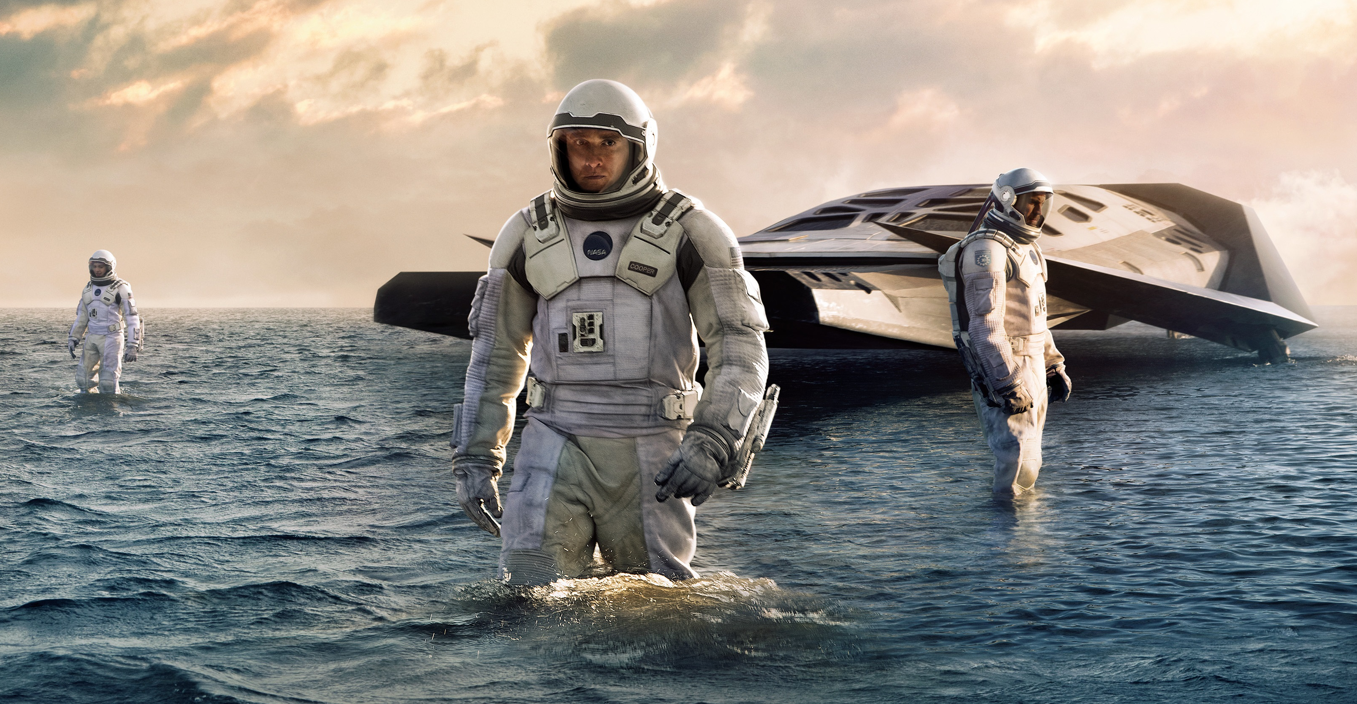Interstellar and the Genius of Christopher Nolan
Take a moment and close your eyes and picture outer space that is, the space of travel and stars and planets — the place that the spacecraft Apollo ventured into and from which some astronauts nearly did not return. I would wager that the images popping up in your mind have their origins in ‘science fiction’ films, the Hubble telescope and National Geographic. The reason that this is important is that most of us will never be able to venture into space and all we have to rely on are images, like the ones Chris Hadfield recently published in his book. Or, TV shows like Star Trek and Battlestar Galactica. For the most part, we are caught in a fictional universe most particularly when physicists add colour to the darkness that is space so that we can (as we should) appreciate the beauty and majesty of what lies so close and yet is so far away. Keep in mind, that we are only a few decades into space exploration, what is fifty years among many millennia?
The hunger to escape our planet, so long attributed to the desire to explore new frontiers has morphed over the last decade into apocalyptic visions of an earth that has become uninhabitable. The sheer pleasure of exploration and the now obvious naiveté of the prime directive (Star Trek) or the depiction of aliens has shifted into a more deliberate strategy of asking questions about life itself and baseline notions of continuity, both historical and personal. What if, as Interstellar asks, the planet is finished and we need to think about a time of departure and a destination for the human race? This is not a question that should be treated lightly, especially as our planet heats up and governments avoid dealing with the consequences.
Christopher Nolan’s genius comes out in a key scene with two educators at the local school, attended by the son and daughter of the main character, Cooper who is magnificently played by Matthew McConaughey. Ms. Hanley tells Cooper that his daughter brought in a book about the Apollo mission to the moon. She claims that the mission was a carefully staged affair meant to provoke the Russians into a space race to bankrupt them. Ms Hanley tells Cooper that his daughter, Murph needs to be told the truth about the mission and that she is a disruptive influence on the other students. Under normal circumstances, this type of comment would receive the derision that it deserves, but along with many other conspiracy theories, the one about the Apollo has had long legs and continues to attract a not inconspicuous number of people.
So, here is where fiction and science reverse positions and where an untruth can take on the quality of a truth because there are enough people out there to give the conspiracy some undeserved legitimacy. But, it is not only the stupidity of the idea that Nolan is exploring here. It is the role of education and learning in a culture that has reductively concluded that critical thinking must be driven by ideological purpose. The critique of the contradictions of modern culture in this scene is significant. The gaps among history, experience and science are so vast that the culture has come to depend on ‘hope’ as a solution. Hope is built on faith, but faith cannot overcome a burning planet just as love cannot solve the challenges of understanding gravity. But, love can motivate, emotions can drive rationality if we understand why those closest to us are for better or worse, the universe we inhabit, the universe within which we build our sense of self and community. It is that inner space that Nolan has explored in all his films but particularly in Memento and Inception — the inner space we voyage to every night in our dreams and during the day in our thoughts and daydreams.
Interstellar is about the conflict between rationality and ideology and between the magnificence of the human imagination and the sheer baseness of human need. The film explores the boundaries of science in order to better understand cultures that have lost their connection to learning and scholarship. Space is simply the excuse as well as the justification for exploring the inner space of the characters, the fears and psychoses and neuroses of everyday life and lives.
Interstellar is also about the power of the cinema to create and sustain imaginary worlds. The film burrows deeply into the emotions and psyche of longing and love. For all our prowess humans remain frail and easily fall into the traps of narcissism and egomania — witness the roles played by Matt Damon and Casey Affleck. The cinema is after all, the last, the very last frontier that we can explore in the safety of our imaginations. And, with the Oculus Rift on the horizon, we will be able to feel a sense of physical immersion that will indeed cross the boundaries of space and time.
Some critics have complained about the weaknesses and inconsistencies of the plot. Nolan however, knows how to create a liner plot. Here he chooses to leave a great deal unresolved and in doing so, he invites his audiences to explore their inner worlds and their expectations. In the world of Hollywood fiction governed by conventions and standards, and by stories that try to tie up every knot, every tangential shift and direction, Nolan instead looks for the boundaries that both separate and unify inner and outer space, which he hopes in the end will simply lead to a better understanding of ourselves.

